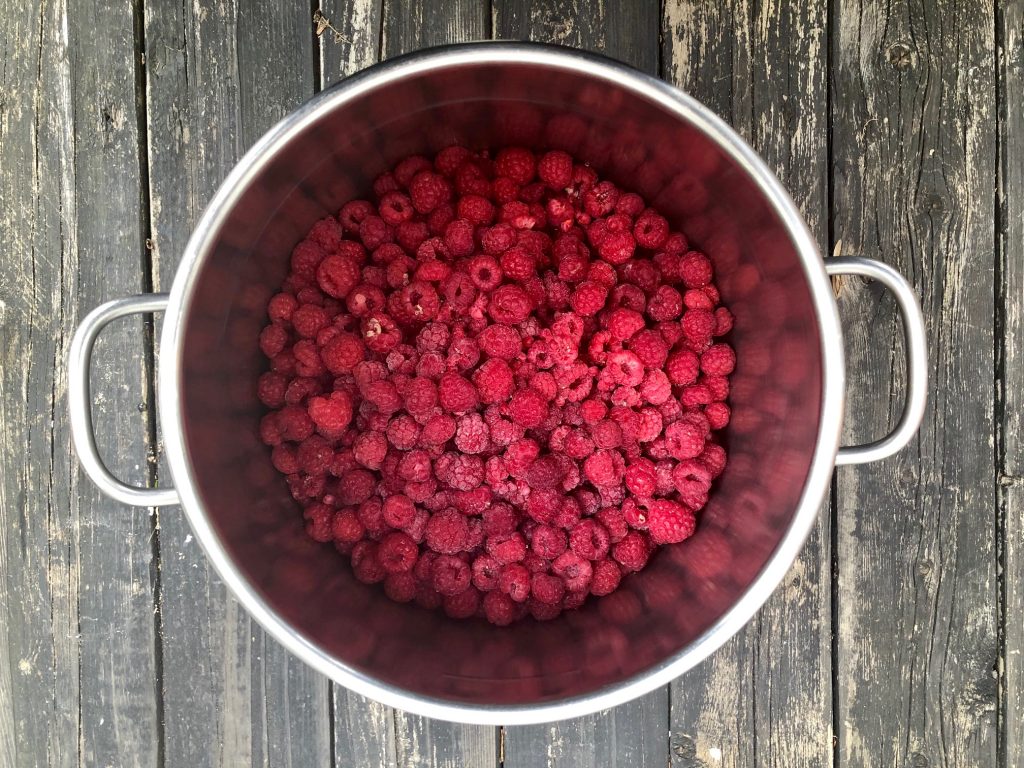
Let’s hit that Rosé all day! Blooming onto the trending beer scene over the past couple of years, rosé beer is the light, fruity wine/beer hybrid that was destined to be a summer favorite. Rosé beer has been around since the 90’s via Dogfish Head in Delaware. Since then, its way around the world in numerous breweries. Rosé is not a distinct category like some of the previous recipes we’ve covered, but offers plenty of variety and room for experimentation. In fact, the biggest commonality in Rosé beers is having “rose” in the name. Be it in name only or designed to be like its namesake wine, Rosé beers are the perfect start to summer brewing.
In order to classify as a beer, this experimental brew must contain no more than 49% grapes and a minimum of 51 % malt. BSG’s Deborah Wood created a delicious raspberry-filled Rosé recipe for you to brew at home!

Ingredients
For 6 gal (23 liters)
- 10 lbs (4.5 kg) Weyermann® Bohemian Pilsner
- 7 1/4 oz (200g) Crisp Dextrin Malt or Weyermann® Carafoam™
- 8 cups (2 liters) Chardonnay Grape Juice -late addition, 5-10-minute boil
- 2.65 lb (1,200 g) Frozen Raspberries
Hops
- 1 oz (28g) Tettnang 4.5aa x 60 minutes boil IBU: 14.3
- -0.3 oz (9g) Mandarina Bavaria 9 aa x 60 minutes boil IBU: 9.2
- ½ oz (14g) Tettnang 4.5 aa x 15-minute boil IBU: 3.5
Wort Clarification/Yeast
- 1 x Whirlfloc T Tablet x 15-minute boil
- 2 x 11.5g Fermentis Saflager 189 ferment at 57 F (14 C)
Specifications
- Original Gravity: 1.067
- Final Gravity: 1.010
- ABV 7.48
- IBU :27
Directions
Mash out at 167F (75C) x 10 minutes, adjust ph. to 5.2 à 5.4
I reduced the amount of water used to brew by a volume equal to the amount of the grape juice that I added at the end of the boil. Please use 8 cups less water when sparging, and replace this water with an identical volume of grape juice which is added during last 5- 10 minutes of the boil.
To sterilise the frozen raspberries place them in a pot then cover the fruit with hop wort. To kill bacteria’s and wild yeasts on the fruit, please keep the fruit and wort mixture at around 167F (75C) for 20 minutes. You can then then add the fruit directly into the fermenter or cover it and let it cool then add with the chilled wort in the fermenter just before you pitch the yeast.
Chill the wort to 59 -60 (15 C) and ferment at 59 F(14 C). If you have trouble doing a cold fermentation please substitute with a more temperature tolerant lager yeast. The SafLager W34-70 can easily ferment at a wide range of temperatures between 56- 69 F (14- 20 C) with out developing off flavors and aromas. When using lager yeasts, it is important to use 2 packs for a 6-gallon batch in order to assure a rapid onset of the fermentation. With Ale yeast only one pack is necessary.
The length of time it will take to ferment will depend upon the fermentation temperature. Warmer temperature causes the beer to ferment more rapidly. The fermentation will take between 6 to 10 days, once fermentation is completed, place the beer in secondary.